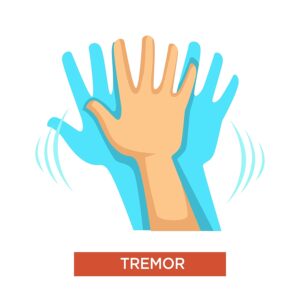In the last few years focussed ultrasound as tool to treat tremors and depression has emerged successfully. A recent CNN article summarized this in detail.
Focussed ultrasound treatment uses sound waves that are highly focussed. This can burn tissue, including brain tissue, to remove faulty brain circuits responsible for essential tremor. Dr. Neal Kassell, founder and chairman of the Focused Ultrasound Foundation said:” Focused ultrasound is a non-invasive therapeutic technology. We’ve said that focused ultrasound is the most powerful sound you will never hear, but sound that someday could save your life.” He explained that focussed ultrasound works “analogous to using a magnifying glass to focus beams of light on a point and burn a hole in a leaf”. Dr. Kassell went on to say:” With focused ultrasound, instead of using an optical lens to focus beams of light an acoustic lens is used to focus multiple beams of ultrasound energy on targets deep in the body with a high degree of precision and accuracy, sparing the adjacent normal tissue.”
Essential tremor
There is one small area in the brain that causes essential tremor. This is the kind of tremor that can occur in people age 40 and older. It typically affects one side of the body more than the other. Although it can affect almost any body part, it is often affecting the hands. The affected person wants to carry a cup of coffee, but the shaking in the hand causes spills and broken dishes. Simple tasks such as eating, drinking or writing are very difficult for people with essential tremor.
This happened to 80-year-old Brenda. She has suffered from essential tremor for 20 years. Now this was treated with just 44 seconds of focused ultrasound. She could not believe it when she looked at her hand: “I looked at my hand, and I could see that it was not moving, and that was the first time I had been able to see my fingers still in about 20 years. I think it’s definitely a miracle.”
How focussed ultrasound works
Focussed ultrasound works like a type of functional neurosurgery, but without a knife. The physician burns a small focus of tissue deep in the brain, which in case of a tremor takes the interfering focus away. The procedure takes about 2 hours, but the physician spends most of the time mapping the brain and testing the target. Only then the physician treats the focus, which lasts less than a minute. Anybody not responding to medication is eligible for focussed ultrasound.
Dr. Nir Lipsman is a scientist at Sunnybrook Health Sciences Centre in Toronto. He is also director of Sunnybrook’s Harquail Centre for Neuromodulation. Ideally, the effect of focussed ultrasound is permanent. But he added: “If you’re able to destroy the part of the brain responsible for the tremor, it should be a permanent effect. At one year, however, some of these patients will have a rebound or recurrence of their tremor, and we don’t know why that is.” Dr. Lipsman said about side effects: “The most common risks that we encounter in patients is a temporary numbness or tingling that can sometimes happen in the treated arm or in the lip area. The vast majority of the time that goes away with time.”
Conclusion
Focussed ultrasound works like a type of functional neurosurgery, but without a knife. It is the newest tool against essential tremor, which is a condition where the patient’s hands display a tremor, which the patient cannot control. It occurs in people age 40 and older. Many patients do not respond to anti-tremor medication. Their only hope is that focussed ultrasound treatment takes away their tremor. This treatment method also helps in difficult to treat depression cases and in Parkinson’s disease. Focussed ultrasound treatment is one of the newest tools in medicine to help treating difficult conditions.







